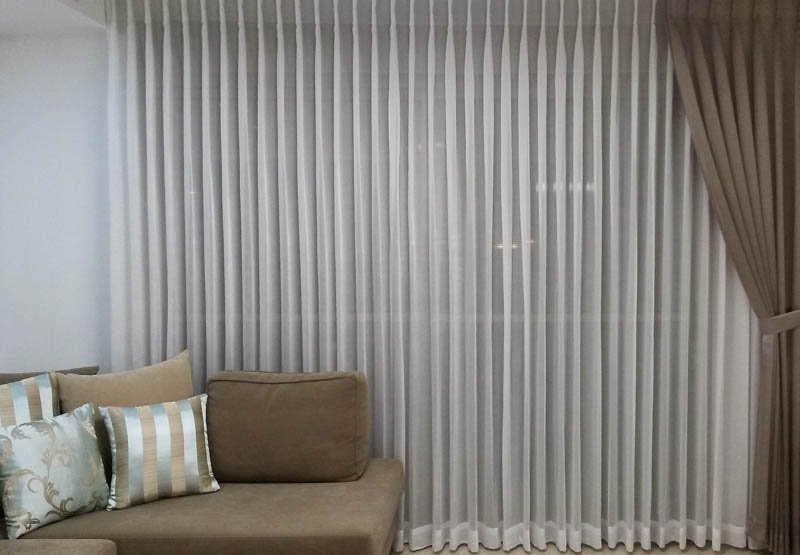Finding office window furnishings Blinds designers are one of the leading companies in the UAE. They can help you find the perfect fit for your business space and are available for creative design consultations. When you’re choosing curtains for your office space, be mindful that the wrong type of curtain can ruin the look and feel of your workplace.
Look for curtains made with good quality materials to last as long as possible. Professional advice is necessary when you’re ordering office equipment. Looking for affordable office curtains in Dubai? Curtain Dubai offers stylish UV-resistant fabric curtains with installation service for any budget. Visit Curtain Dubai if you are in need of new office curtains. They are inexpensive, easy to install, and come in many different styles.
Your options for office curtains are almost endless. If you’re worried about natural light, you should consider choosing light-proof curtains that protect your staff from UV rays but still let enough light through so your employees won’t feel claustrophobic. You can choose to match the colors of your curtains to the rest of your decor, or you can pick something completely different. Whatever you choose to do, office curtains act as a visual partition between work and home life. Office curtains offer a variety of uses, but primarily they block out the sun.
Some office curtains are simple and dull, while others are more fashionable and elegant. Curtains can vary in price, so make sure you weigh your options to find the one that best suits you and your budget.
The profession of curtain design.
Curtain design has always been a popular profession, and with good reason. Curtain designs can add an extra level of elegance and sophistication to any room in your home or office, and they’re also a great way to add personality to your space. If you’re interested in becoming a professional curtain designer, be sure to read this article for tips on how to get started.
Curtain design is a profession that is often misunderstood. While it might conjure up images of people with needlepoint and a love of fabrics, curtain design is actually a lot more than that. In this article, we’ll be taking a look at the different aspects of curtain design and explaining what goes into making a perfect curtain from start to finish.
What is a curtain designer does?
Curtain designers are people who design and create curtains. This can be done through the use of curtains, drapes, or just by adding a touch of color. Some people who may want to become curtain designers might have an interest in textiles, art, or design in general. Curtain designers use these different types of curtains to create a variety of window treatments. Others may have a background in fashion or textile design and want to learn more about how to incorporate curtains into their designs.
There are many schools that offer courses in this area, and most employers prefer candidates who have some experience in the design field.
Drapes are made from a thicker material and are used for more formal window treatments. They can be pulled back or closed to create privacy, or closed completely to block out light and create a dark room.
Roman Shades: Roman shades are similar to drapes in that they’re made from a thicker material and can be styled in many different ways. However, roman shades have a pointed end that makes them look more like a curtain than a shade. They’re often used in bedrooms or bathrooms.
On the plus side, many people enjoy designing curtains and find it rewarding. Additionally, curtains can be an inexpensive way to add style and function to a room. If you aren’t passionate about curtain design, you may not be able to sustain a career in this field. Additionally, there is a chance that the market for curtains will change over time, which could mean that your work won’t be in demand.
The ability to design curtains opens up many possibilities for careers in retail, advertising, and other industries. It is a craft that can be done from home, which may be appealing to some people.
The work may require extensive knowledge of curtain fabrics and construction methods, which may not be necessary for all jobs. Many people start out as apprentices or learn on the job, so there may not always be opportunities available right away. The industry is often competitive, so it may take time to build a reputation and find steady work.
Silk: This is the most expensive type of curtain fabric, but it is also the most luxurious and delicate. It is often used for curtains in upscale restaurants or hotels.
Wool: Wool is a versatile fabric that can be used for many different types of curtains.
Polyester: Polyester is a cheap and common type of curtain fabric. However, it tends to be less luxurious than other types of fabrics, so it may not be ideal for high-end curtains.
Each type has its own unique features and benefits that can be used in different ways to create a unique curtain look. Here are some of the most common types of curtain fabric and what they are best suited for:
Woven fabrics have a smooth, textured appearance and are often used for window treatments or sheer curtains. Some examples of woven fabric include cotton, polyester, and silk.
Fabric with Embroidery: This type of fabric is made up of many small pieces of fabric with intricate embroidery or lace designs on them. These designs can be subtle or bold, depending on the design chosen. Embroidered fabrics can be very luxurious looking and are often used for curtains that will be seen from outside the room. Some examples of embroidered fabrics include rayon, cotton, wool, and feathers.
Printed Fabric: This type of fabric choice for low-cost curtain designs.
In this article, we will discuss some of the different fabrics that are commonly used in curtain design and provide some tips on how to choose the perfect one for your project. When choosing a fabric for your curtains, it is important to consider both the texture and the weight of the fabric.
Weighty fabrics are often used in formal settings, such as weddings or formal banquets, while light fabrics are more commonly used in more casual settings. Some other factors to consider when selecting a curtain fabric include whether you want a natural or artificial look; whether you want a textured or smooth finish; and whether you want your curtains to be reversible or not. Some popular fabrics used for curtain design include silk, cotton, linen, satin, chiffon, and velvet.
For example, silk is often considered the most luxurious fabric option because it is strong yet delicate; cotton is soft but durable; linen is rustic but versatile, and satin is smooth but also has a bit of luster.
Pattern Making for Curtain Designs.
The curtain design profession is an ever-growing field with many different types of curtains. It can be difficult to know where to start when designing your own curtains, but with the help of a pattern maker, you can create stunning designs that are sure to please.
If you have a formal living room with sleek curtains, you may want to go for a more ornate pattern than if your room is more informal and laid back. If you have traditional curtains with a large valance, you may want to go for a more modern pattern that has smaller panels.
To make sure your fabric matches the pattern perfectly, it is important to measure your fabric before starting any alterations.
Finishing Touches for Curtain Design.
In any room where curtains are used, one thing is sure: they’ll need some TLC.
1. Avoid harsh lighting when choosing fabrics. Soft and delicate materials will be more susceptible to being washed out by harsh light.
2. Keep the width and height of the curtain panels in mind when selecting a fabric. You don’t want them so wide or tall that they touch the floor or ceiling, respectively.
3. Make sure the fabric matches the color scheme of the room. A curtain with bright, primary color against a dark background can really pop.
4. If desired, use coordinating fabrics for the top and bottom panels. This will help tie everything together visually and also save on fabric costs.
5. Think about adding trim or accents to individual panels or the entire curtain ensemble. This can give your curtains a unique look that perfectly suits your room’s style.
The curtain designing course.
When it comes to selecting the right curtain design for your home, there is no one-size-fits-all solution. As a result, at Curtain Design School, we offer a variety of courses that will provide you with the skills and knowledge you need to tackle any project.
The introductory course covers everything you need to know about curtain design, from fabric selection to window treatment tips. If you’re looking for a more comprehensive education, our advanced course offers a deep dive into every aspect of curtain making, from fabric choice to window treatment techniques.
No matter which course you choose, our experienced educators will help you create curtains that reflect your unique style and personality. So whether you’re looking for a fun and flirty touch or something more refined and classical, our curriculum has something for everyone.
As someone who loves to decorate their home with beautiful curtains, it can be hard to know where to start. First of all, make sure you have an eye for color and style.


